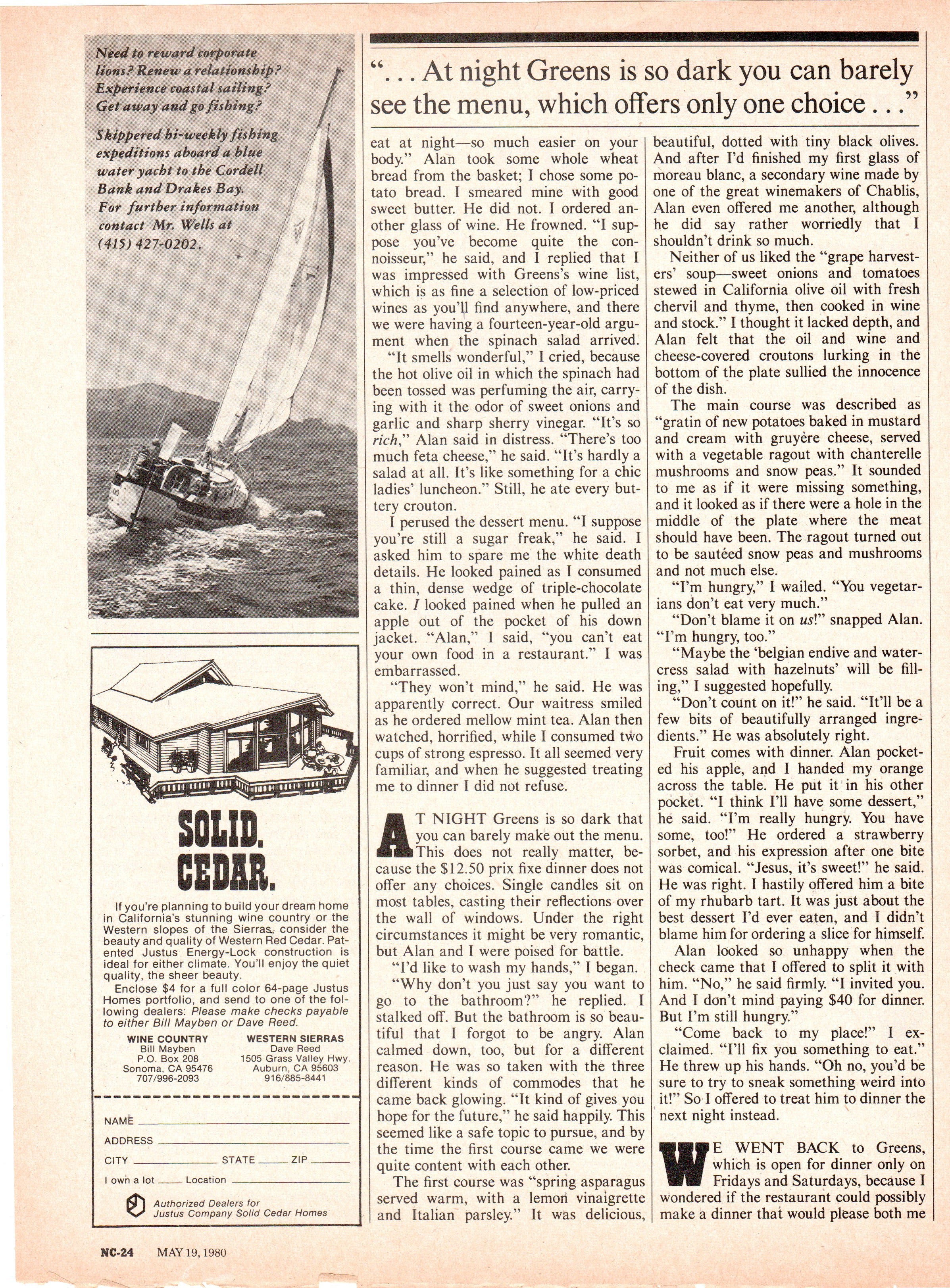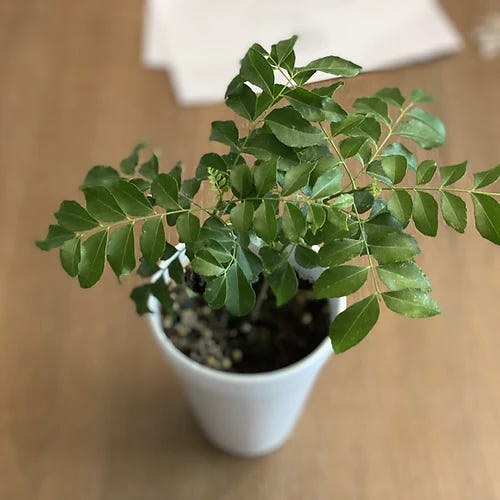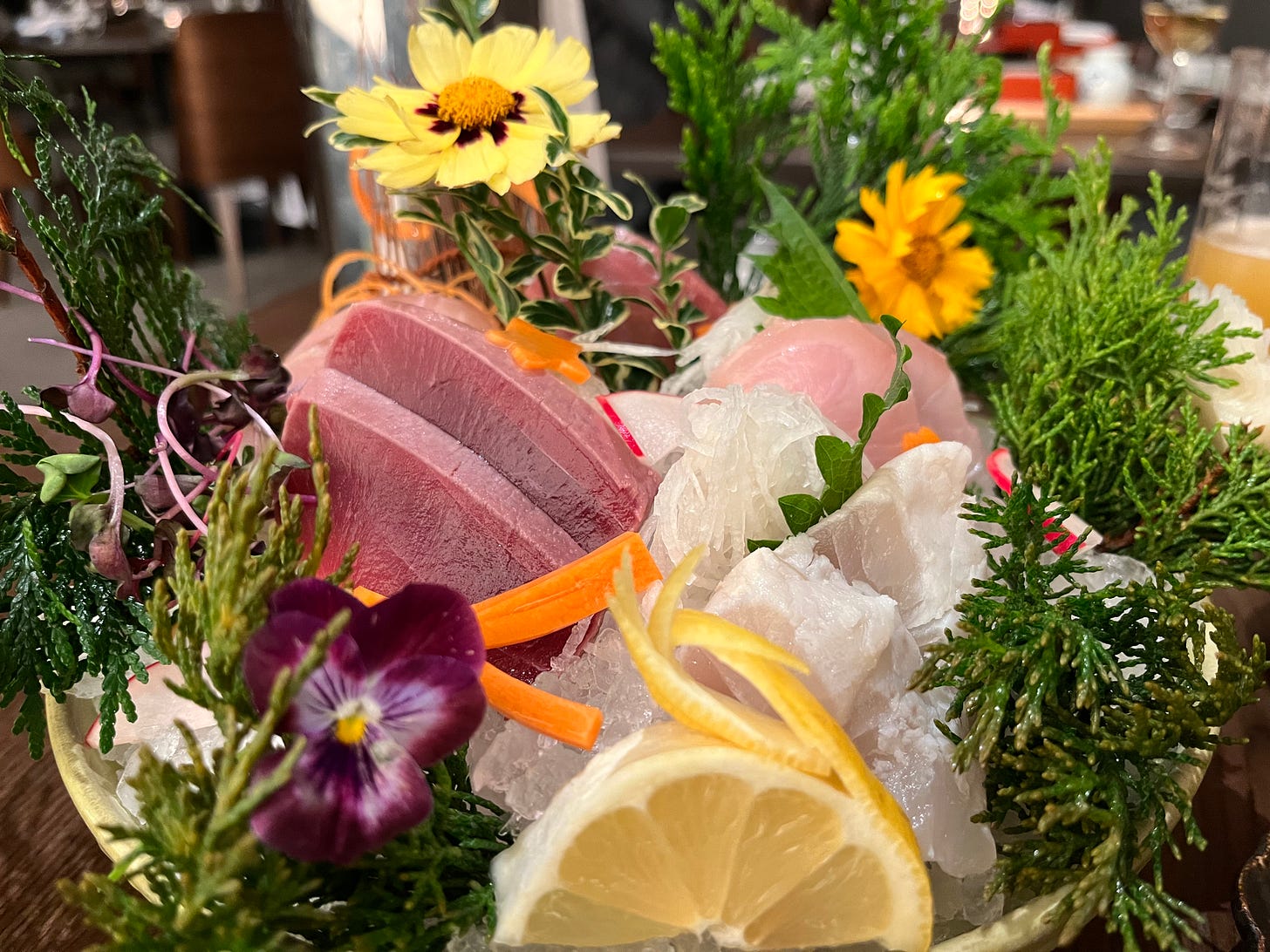The First Great Vegetarian Restaurant
A lovely plant for cooks. Farewell to a wonderful restaurant. And the absurdity of the week.
Spring in the Hudson Valley! The air smells of grass, ferns and the many plants peeking out of the earth on their journey toward the sky. Each day is different; we watch the colors change as trees bud and daffodils burst into bloom.
Returning from the dark, dispiriting LA winter with its endless rain has made each day here feel like a gift. I wander the markets marveling as local produce grows increasingly abundant. Rhubarb now, asparagus tomorrow and the tantalizing promise of strawberries hovers in the air.
The way our markets - and our restaurants - reflect the seasons is fairly new. When I was a child fresh spring peas did not appear in supermarkets, and strawberries were the same tasteless creatures no matter the time of year. This made the idea of a restaurant devoted to vegetables seem quite absurd. When Green’s opened in San Francisco in 1979 I was extremely suspicious.
No wonder: the vegetarian restaurants I knew were dreary places. I often stopped in at Brownie’s at 21 east 16th Street (the site of the first Union Square Cafe) on my way home from school to stare at a menu featuring vegetable bacon, wheat germ, and soy powder. I can still remember the smell of the place, which struck me as weird and rather grim. I’d look around and hurry out; you could not have paid me to dine there.
But Green’s was something else; a beautiful room with tall windows looking onto the sparkling bay. The scents were delicious: fresh greens, butter, lemon, melting cheese. When Marion Cunningham took me there to introduce me to Deborah Madison’s food I was enchanted. Unfortunately, I next went with an old boyfriend and as you will see we argued all through dinner.
My fault. Unaccustomed to seasonal local food I was still wondering where the meat was. Now, in this springtime of abundance, that seems like a very long time ago.
If you’re interested in vegetarian cooking, you probably have a few Indian recipes in your repertoire; no culture has a better handle on meatless menus. And if you’re cooking Indian food, you’re probably on the lookout for curry leaves which add a warmly inviting rather nut-like flavor.
The leaves can be difficult to find. (For a long time the only good source was Padma Lakshmi’s stepfather in California, who supplies Burlap and Barrel. ) Now, however, you can grow your own. There are many sources; I like Kumar’s Garden.
I am very sorry to announce that one of my favorite new restaurants in New York is about to become one of my favorite lost restaurants: Sarashina Hori, a branch of a revered soba-ya which opened in Tokyo when George Washington was president, will close its doors in June.
I can’t tell you how sad this makes me. The serene restaurant makes the best soba I’ve had in New York since the beloved Homura-An shut down in 2007. (My 1993 review of the restaurant was widely criticized because I gave 3 stars to - and I quote - “a little Japanese noodle joint.” It remains one of my favorite restaurants of all time.)
That is why I was so pleased when Sarashina Hori opened in New York. The restaurant offers lovely arrangements of sashimi. Their soba is superb. This is the fancy white version, made only from the buckwheat heart; I prefer the darker Mori soba which contains the outer husk as well. Their tempura is also impeccable.
My suggestion: if you’re a fan of soba, go while you still can.
This is NOT from the archives - although I wish it was. I offer, unedited, a pr pitch I received a couple of weeks ago.
Excited to share news of an upcoming launch from the prestigious cognac producer, LOUIS XIII. This June, LOUIS XIII will release RARE CASK 42.1, the latest limited-edition cognac in Fifth generation Cellar Master, Baptiste Loiseau, discovered a single tierçon (traditional wooden barrel) containing a particularly aromatic eaux-de-vie in the cellars of Domaine du Grollet, the home of the LOUIS XIII legacy. Each of LOUIS XIII’s tierçons are made from French oak trees that take over 100 years to reach maturity, containing precious eaux-de-vie sourced from Grande Champagne’s terroir. Kept undisturbed for several decades, the eaux-de-vie evolves as the liquid deepens with intensity -- this aging process gives RARE CASK 42.1 its distinctive complexity – resulting in an extremely exceptional cognac never encountered before with an unexpected 42.1% ABV.
The 775 limited-edition numbered decanters will be available globally, each crafted from black Baccarat crystal and will retail for $50,000 USD.














Two of the Louie XIIIs, please.
Wait a minute. Didn't anyone see the ad in Ruth's article, "Salad Days and Brown Rice Nights" about the mini tennis court? Where you could play "the new racket sensation Wackit Ball".